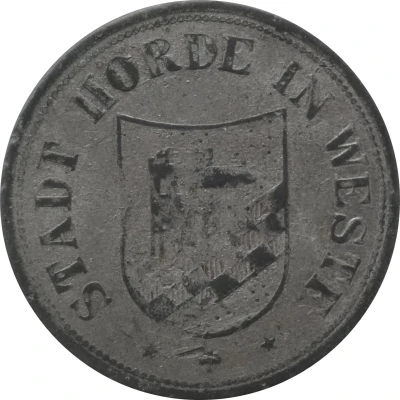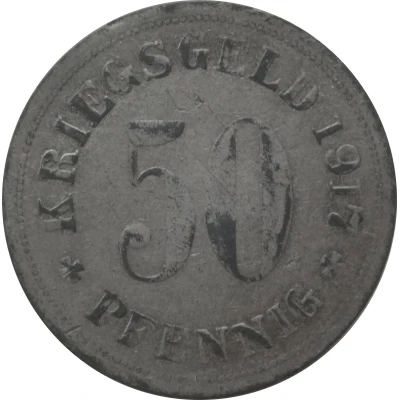


© Willem63 (CC BY-NC-SA)
50 Pfennigs - Hörde in Westfalen
1917 year| Nickel plated zinc | 2.9 g | 23.7 mm |
| Issuer | City of Hörde (Prussian province of Westphalia) |
|---|---|
| Emperor | William II (Wilhelm II) (1888-1918) |
| Type | Standard circulation coin |
| Year | 1917 |
| Value | 50 Pfennigs (50 Pfennige) (0.50) |
| Currency | Mark (1914-1924) |
| Composition | Nickel plated zinc |
| Weight | 2.9 g |
| Diameter | 23.7 mm |
| Thickness | 1.0 mm |
| Shape | Round |
| Technique | Milled |
| Orientation | Medal alignment ↑↑ |
| Demonetized | Yes |
| Updated | 2024-10-04 |
| Numista | N#104681 |
|---|---|
| Rarity index | 83% |
Reverse
Pearl rim, legend surrounding denomination centered
Script: Latin
Lettering:
KRIEGSGELD 1917
50
✠ PFENNIG ✠
Edge
Plain
Comment
Issuing agency: [Stadt, Westfalen].Interesting fact
One interesting fact about the 50 Pfennigs - Hörde in Westfalen 1917 coin is that it was produced during a time of economic turmoil in Germany. The country was experiencing hyperinflation, and the value of the German mark was plummeting. In response, the government introduced a new currency, the "Notgeld," which included coins like the 50 Pfennigs - Hörde in Westfalen 1917. These coins were made of nickel-plated zinc and had a relatively low denomination, reflecting the economic challenges of the time. Despite their low value, these coins are now highly sought after by collectors due to their historical significance and rarity.